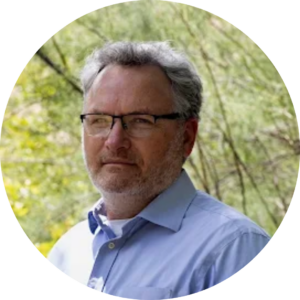We’re a couple weeks past the close of the 2025 General Session of the Utah Legislature. Although this is the first year in quite some time that we haven’t had a direct role in specific legislation or appropriations, we had over 100 legislative items that we monitored, covering diverse interests ranging from water and natural resources, to community development, homelessness and transportation, to matters related to boards, commissions, and public employees.
Not having our own legislative matters to navigate gave us a chance to reflect on many of the transformative efforts from present and past state and local policies, initiatives and projects aimed at improving the Jordan River and its surrounding lands and watershed. During the annual State of the State Address, Governor Spencer Cox highlighted his strategic plan for Utah, and we found not only tremendous alignment of our work with his vision for Utah, but also a useful framework to organize, highlight and celebrate some of our success stories.
Outdoor Recreation
The establishment of the Utah Division of Outdoor Recreation and creation of several outdoor recreation grant programs have funded numerous local and regional Jordan River Parkway projects. Among the most prominent projects is the Jordan River Water Trail. Matched with a Salt Lake County Zoo, Arts & Parks (ZAP) bond and contributions from several municipalities, there are now 26 improved river access points and portages, with 4 more currently in design and development. These provide new access to some long underappreciated and sometimes hidden stretches of the Jordan River. Outdoor recreation grants have been used for many other types of projects as well, including fishing ponds, habitat restoration, trails and paths, outdoor classrooms and other recreation amenities. The Jordan River Recreation Area annual, ongoing appropriation from the Utah Legislature (sponsored by former Representative Mike Winder and Senator Wayne Harper) provides almost $1 million in annual funding for capital improvements, trail development and maintenance, public safety, and recreation and education programming, with dedicated funding for Tracy Aviary’s Nature Center at Pia Okwai, and support for the Jordan River Commission volunteer and outreach staff and programming.
Natural Lands Preservation & Conservation
Over the past two decades, numerous natural lands preservation and restoration efforts have come to fruition—both large and small. Some of these include the Galena Soo’nkahni Preserve (over 250 acres) in Draper; the Jordan River Migratory Bird Reserve (over 120 acres) in South Jordan and Sandy; the Big Bend regional nature park & preserve (over 70 acres) in West Jordan; Germania Park and the Kennecott Nature Center (over 100 acres) in Murray; and the Legacy Nature Preserve (2,200+ acres) in North Salt Lake. Another emerging preservation initiative just announced last month, through a partnership with Salt Lake City, National Audubon Society, Friends of Great Salt Lake, Salt Lake County, and the Jordan River Commission, includes a site of about 200 acres to preserve and restore a sensitive natural land development buffer near the Jordan River and Great Salt Lake Shoreline Heritage Area.
Riparian Habitat Restoration
The formation of the Jordan River Cooperative Weed Management Area in 2019, together with a $250,000 Jordan River Weed Management Fund annual, ongoing appropriation in 2022 from the Utah Legislature (sponsored by former Rep. Steve Handy), and the nearly $5 million federal America the Beautiful Challenge Grant awarded last year (funded primarily by the Jobs & Infrastructure Act spearheaded by former Senator Mitt Romney), have provided major funding to tackle invasive species like phragmites, Russian olive and tamarisk, and restore more natural and native habitat areas across the entire river riparian system. Four municipalities—Saratoga Springs, Lehi, Cottonwood Heights, and Salt Lake City—have developed specific riparian overlay zones in their land use codes to help preserve and restore riparian functions. Utah, Salt Lake and Davis counties, and many municipalities across the Jordan River, have included riparian and other sensitive riparian areas in their comprehensive plans.
Watershed Planning & Coordination
The Jordan River Comprehensive Management Plan was completed in 2017, and updates to the Utah Lake and Great Salt Lake comprehensive management plans are currently underway. Regional watershed planning projects, including the Great Salt Lake Basin Integrated Plan and the Salt Lake County Integrated Watershed Plan are bringing together diverse interests and stakeholders to develop long-range plans that balance future natural resource uses and needs with their sustainability and stewardship. Additional specific plans for the Jordan River and surrounding areas and tributaries include the Seven Greenways Plan for the seven major Central Wasatch tributaries; the H2Oquirrh Plan for the Jordan River and major Oquirrh Mountain tributaries and watershed, the Central Jordan River Reconnect Master Plan for the Salt Lake County Jordan River regional nature park between 5400 South and State Highway 201, currently in the planning stages; and the Emerald Ribbon Action Plan for the Jordan River area of Salt Lake City. These local and regional plans and proposed improvements, some of which are already funded and beginning implementation, encompass water quality, watershed health, and active and passive outdoor recreation opportunities and experiences.
River Oriented Development
Numerous community development opportunities have emerged around the river, particularly those closely connected with transit hubs, that value and incorporate the river as a key amenity and asset. Several major projects include the Wander Community (over 400 acres) in Saratoga Springs with a 35-acre riverfront nature park; The Point (over 600 acres) redevelopment of the former state prison in Draper with the river to range trail and greenway as a centerpiece; the remediation and redevelopment of EPA brownfield superfund sites in Midvale, known as Bingham Junction, developed around two TRAX stations near the Jordan River (Salt Lake County also recently announced the relocation of its central Government Center to this central valley location); and the Utah Fairpark Area & Power District (approximately 200 acres) that includes redevelopment and revitalization of the Rocky Mountain Power Plant, State Fairpark and other state owned properties near the Jordan River and North Temple to create a sports, entertainment, cultural and business district, as part of a larger new urban neighborhood in Salt Lake City.

Soren Simonsen
Executive Director
Jordan River Commission


